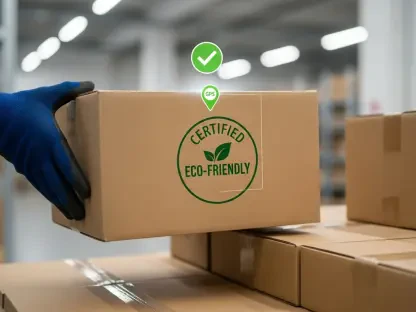The cold chain industry is undergoing a significant shift, with automation playing an instrumental role in transforming operations toward a more sustainable model. In response to increased regulatory pressure to lower carbon emissions, this market analysis delves into how automation is changing the landscape of cold chain logistics, offering enhanced efficiency while promoting environmental stewardship. The analysis will explore historical patterns, current innovations in automation, and provide a forecast of upcoming trends, demonstrating the profound implications for future operations.
Cold Chain Transformation: Context and Importance
As the need for sustainable practices escalates, the cold chain sector finds itself at a critical juncture. Traditionally reliant on energy-intensive methods, the industry is now shifting toward automated systems that promise substantial reductions in energy consumption and waste. This transformation is essential for maintaining product integrity in vital sectors like food and pharmaceuticals and for aligning with global sustainability goals. Understanding the dynamics of this change provides valuable insights for stakeholders aiming to adapt and thrive in this evolving market.
Profound Shifts in Historical Cold Chain Practices
Historically, cold chains have been synonymous with high energy consumption and significant greenhouse gas emissions, largely due to their dependence on diesel-powered transportation and expansive, energy-intensive warehouses. Earlier innovations were primarily oriented toward improving speed and accuracy, often at the expense of environmental efficiency. While mechanization addressed some logistical challenges, it inadvertently intensified ecological footprints. Today, automation seeks to fill this gap by enhancing the sustainability and operational efficiency of cold chains, signaling a needed pivot in industry practices.
Market Trends: Automation Driving Sustainable Solutions
Increasing Efficiency and Minimizing Waste Through Automation
A central tenet of automation in cold chains is the potential to significantly improve energy efficiency and decrease waste. Technologies such as Automated Storage and Retrieval Systems (ASRS) are at the forefront, featuring compact and high-density storage solutions that reduce both energy usage and warehouse space. Integrated AI systems play a pivotal role in climate control, ensuring optimal conditions are maintained only when necessary, which greatly reduces spoilage and waste. Industries like food processing and pharmaceutical distribution are already seeing the benefits, noting marked declines in product loss and operational costs.
AI Innovations in Transportation Efficiency
Automation’s influence extends beyond the warehouse, notably impacting transportation logistics. AI-driven route optimization enhances efficiency by minimizing travel distances and fuel consumption, leading to lower carbon emissions and improved delivery times. The growing adoption of electric and hybrid refrigerated vehicles further underscores this shift, as they offer a cleaner alternative to traditional diesel-powered options. Although infrastructure challenges and initial costs exist, the long-term environmental benefits and cost savings provide motivating factors for transition.
Addressing Challenges in Global Deployment
Despite advancements, the global deployment of automated cold chain solutions shows regional disparities. Developing regions often encounter difficulties due to financial and regulatory constraints. Innovative solutions, such as solar-assisted refrigeration and passive cooling techniques, present feasible alternatives for these markets. Rather than opting for an all-encompassing automation strategy, phased implementations tailored to specific regional needs offer a viable path forward, enabling widespread adoption and benefit.
Emerging Innovations and Future Perspectives
The cold chain market is on the brink of further technological developments. Emerging innovations, including battery-powered and solar-assisted refrigerated vehicles, and AI-optimized HVAC systems, promise to redefine how perishable goods are preserved and transported. With regulatory standards shifting to favor greener practices, the integration of renewable energy sources will not only reduce operating costs but also help meet sustainability targets. The future of cold chains will likely be defined by the effective blending of technology with eco-friendly practices to improve industry performance.
Implications and Strategic Insights
From this comprehensive exploration, several strategic insights emerge for businesses looking to harness automation to its fullest extent. Investments in energy-efficient technologies such as AI-driven systems and electric vehicles should be prioritized. Emphasizing a data-centric approach to track energy usage and carbon emissions will ensure compliance with emerging sustainability mandates. For consumers, supporting brands with sustainable logistics practices can foster environmentally conscious choices. Implementing these strategies is critical for maintaining competitiveness in a rapidly evolving market landscape.
Strategic Recommendations
In conclusion, the integration of automation in cold chain operations offers a transformative opportunity for enhancing both efficiency and sustainability. The market’s progression toward greener practices requires strategic engagement from businesses to fully leverage technological advancements. Going forward, maintaining this momentum requires a concerted effort across the industry to innovate and adapt, ensuring that the environmental impact is minimized while operational efficiency is maximized, setting the stage for a more sustainable future in cold chain logistics.









